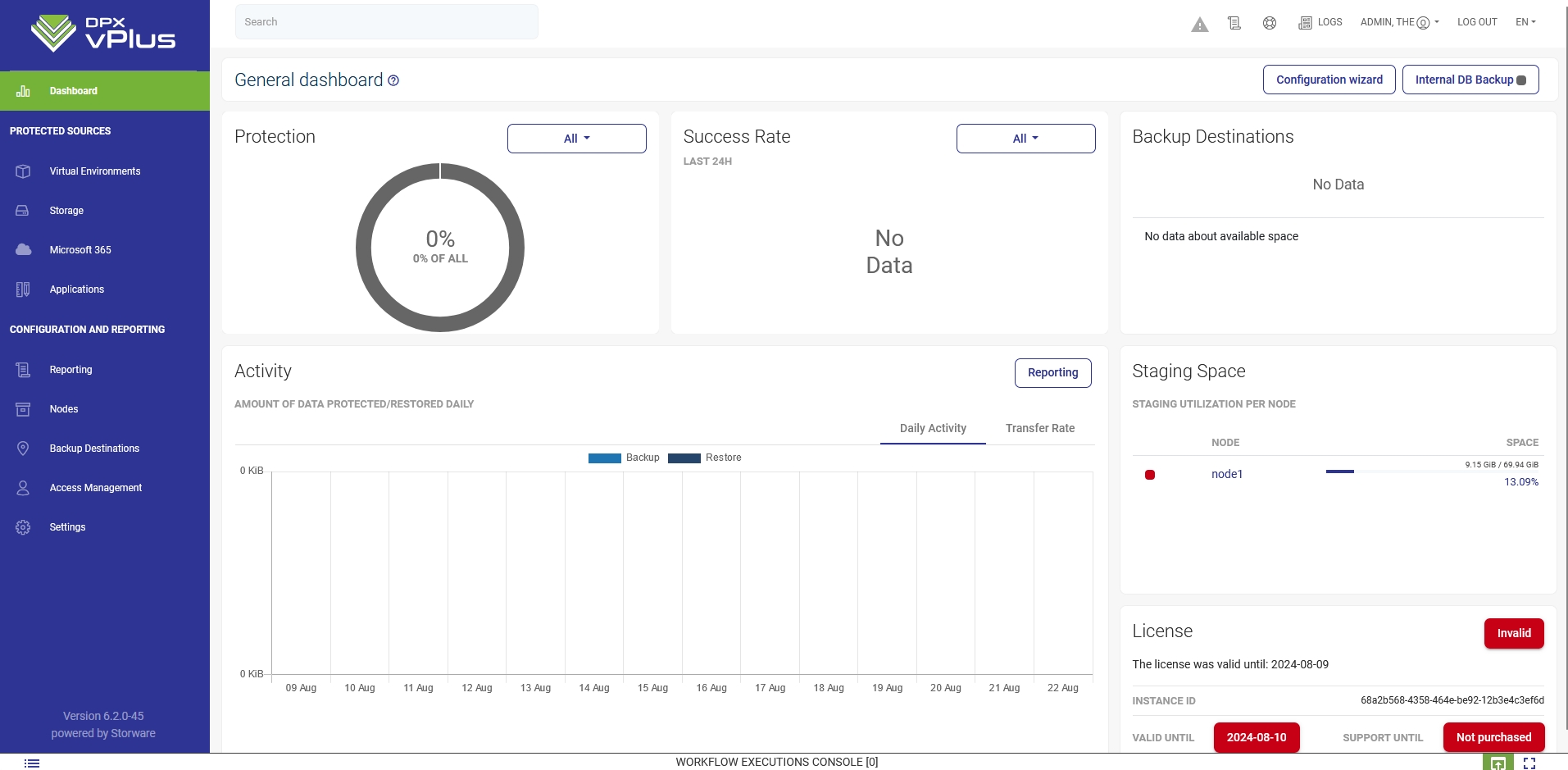Dashboard

Overview
The primary vPlus interface is the WEB UI, accessible via a web browser.
Divided into a few sections, it makes it possible to view and set the most vital options related to management, monitoring, and reporting.
The left pane contains the main menu (see below for a more detailed description).
The Protection field present the overall statistics about protection of your environment. The instance is considered protected when it is attached to Backup SLA with schedule and the backup has been done successfully in the last 24 hours.
The upper right corner provides access to documentation, support, and system logs.
The lower part provides the option to view the (sliding) task console.
The menu on the left provides access to the most important sections:
Dashboard - the main screen with a general summary and the configuration wizard
Virtual Environments - page where you can add and protect your Environments
Storage - page where you can add and protect your Storage
Cloud - page where you can add and protect your Microsoft 365 organization
Applications - page where you can add and protect your Applications
Reporting - page where you can see all reports from vPlus
Nodes - node management and node configurations
Backup Destination - create and manage backup destinations
Access Management - create and manage your accounts (Language, time zones, etc.)
Settings - From here, you can manage global settings, licenses, email, authentication, and internal DB backup.